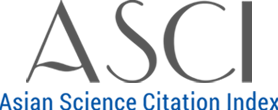Digitalization of HRM for strategic human resource management orientation – logistic regression and dominance analysis approach
DOI:
https://doi.org/10.5937/StraMan2400011BKeywords:
strategic HRM, strategic HRM orientation (SHRM), digitalization of HRM, digital HRM practices, CRANET, logistic regression, dominance analysis (DA)Abstract
Background: According to the contemporary HRM theory, strategic human resource management (SHRM) orientation, as a company’s philosophy of aligning human resource management (HRM) policies and practices with an organizational strategy for maximizing organizational results, is considered the highest level of a company’s HRM development. At the same time, one of the trends in HRM is the digitalization of HRM activities, following the global trend of adopting digital tools for increasing individual and organizational efficiency and effectiveness. The question that consequently arises is whether the digital component entered the SHRM perspective, in other words, whether SHRM orientation could exist without digitalization of HRM endeavours.
Purpose: The paper strives to provide answers, both theoretically and empirically, to the following central and three supporting research questions: CRQ = Is digitalization of HRM contributing to the strategic HRM orientation of a company?, SRQ1 = Are digital HRM practices positively related to the SHRM orientation?, SRQ2 = Are some digital HRM practices more relevant for the SHRM orientation than others?, and SRQ3 = If the relationship between digital HRM practices and SHRM orientation does exist, which digital HRM practice is the most relevant one for SHRM orientation?
Study design/methodology/approach: To provide empirically based answers to research questions, we utilized the CRANET 2021 dataset, covering 4495 organizations with more than 200 employees from 38 countries worldwide. We used nine indicators for revealing the existence of digital HRM (manager self-service, employee self-service, HRIS, algorithm-based HRM, HR analytics, telework, digital learning, social media recruitment, social media selection) and five indicators for determining the SHRM orientation (HR manager’s membership in the management board or equivalent; involvement of HR manager in the development of business strategy; existence of written HRM strategy; HR to employee ratio, the level of HR department performance evaluation). SHRM orientation was determined using K-Means cluster analysis, and relationships between variables were analysed using correlation analysis, multiple logistic regression and dominance analysis (DA).
Findings/conclusions: Correlation analysis revealed that all indicators of digitalization of HRM processes have a positive and a significant relationship with SHRM orientation, implying that digital HRM practices are relevant for SHRM orientation. The results of logistic regression indicated that the usage of manager self-service, algorithm-based HRM, HR analytics, telework, digital learning and social media selection increase the probability of organizations’ SHRM orientation more than other explored indicators. The results of DA demonstrate that the most important digital HRM practices for the SHRM orientation is digital learning.
Limitations/future research: As CRANET dataset is limited in its variables of digital HRM and indicators of SHRM orientation, further research is needed to confirm our findings.
Downloads
Published
Issue
Section
License
Copyright (c) 2024 Milka Rimac Bilušić, Nina Pološki Vokić

This work is licensed under a Creative Commons Attribution 4.0 International License.














